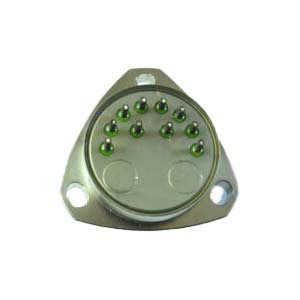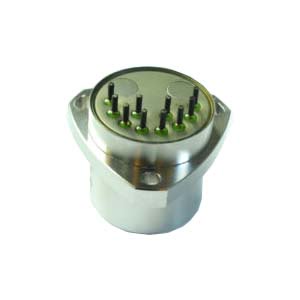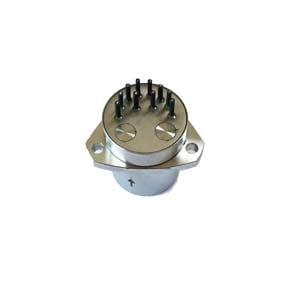Accelerometers are sensors that measure the motion of objects from the point of view of acceleration. The acceleration measured by the accelerometer includes the change of the moving speed of the general object (linear acceleration), the low-frequency shaking of the object, and the high-frequency vibration. Therefore, there are many kinds of accelerometers, from accelerometers that detect heavy static acceleration to 10KHz high-frequency response accelerometers. Generally referred to as "accelerometer", "acceleration sensor" and so on.
There are many types of accelerometers:
According to the detection quality of the displacement of the classification of a linear accelerometer (detection quality for line displacement) and pendulum accelerometer (detection mass rotation around the support axis)
According to the support methods, they are classified as gemstone support, flexible support, air floatation, liquid floatation, magnetic suspension and electrostatic suspension
According to the composition of the measurement system, there are open-loop and closed-loop types
According to the working principle, there are vibrating wire type, vibration beam type and pendulum type gyro accelerometer
According to the number of input shafts, there are uniaxial, biaxial and triaxial accelerometers
According to the classification of sensor elements, there are piezoelectric, piezoresistive and potentiometer type
An accelerometer is usually named by combining the features of several different classifications.
Quartz vibrating beam accelerometer
Vibrating beam accelerometers are rapidly becoming the dominant product in the field of navigation, which has undergone a longer development phase and has begun mass production. Because of its large response bandwidth, it can be compatible with digital signal processing systems, and can replace conventional linear accelerometers in many applications.
Vibrating beam accelerometer can use metal, ceramic, quartz, silicon and other materials. Quartz crystal has piezoelectric characteristics, which is easy to excite and sensitive; Quartz crystal has very low internal loss and infinite fatigue life, and has excellent mechanical crystal stability. Quartz crystals have good rigidity, high hardness, and zero temperature coefficient, and because of this, quartz crystals have become the preferred material for vibrating beam accelerometers. The scale factor stability and axial positioning of vibrating beam accelerometers are particularly good, which is a direct result of the use of resonant force transducers. The scaling factor is determined by the quality and elastic constant of the quartz, and the positioning of the input axis mainly depends on the position of the pendulum, which is related to the inherent stability of the quartz. The very precise scale factor and good axial positioning performance are very useful in the inclination measurement of navigators, because it is to measure the component of the Earth's gravity.
Piezoelectric accelerometer
Piezoelectric accelerometers use the piezoelectric effect to measure acceleration. Piezoelectric accelerometers contain piezoelectric materials, mass blocks and other components. When the speed of the accelerometer changes, the mass blocks will compress or stretch the piezoelectric material. According to Newton's second law of motion (F=ma), the change of electric charge inside the piezoelectric material (proportional to the force applied) is proportional to the acceleration applied to it. It makes the accelerometer an effective measuring device. When the measured vibration frequency is much lower than the natural frequency of the accelerometer, the change in force is proportional to the recorded acceleration. Piezoelectric materials generate an electric charge when they are stressed, without the need for an external power source.
Piezoresistive accelerometer
Piezoresistive accelerometers take advantage of the piezoresistive effect of the material (the resistance value changes with the amount of strain) to measure the acceleration. Piezoresistive accelerometers usually consist of a beam and a mass block on the beam. There are piezoresistive materials on the beam, when the mass block moves up and down under the action of inertial force, the resistance value on the beam will change with the change of strain, so that the output voltage of the measuring bridge (a bridge composed of multiple resistors) can change, so that the acceleration can be measured.
If you want to get more details about quartz-accelerometer,pls visit: https://www.ericcointernational.com/accelerometer/quartz-accelerometer/
For more information, please feel free to contact info@ericcointernational.com
More Technical Questions
1.Calibration Method of Accelerometer
2.What is the Quartz Accelerometer Digital Closed Loop Servo Circuit?
3.How to Improve the Long-term Stability of the Quartz Accelerometer?
4.What is the Effect of Temperature Coefficient on Quartz Accelerometer?
5.What are the Advantages and Disadvantages of Quartz Accelerometers?
6.Quartz Accelerometer VS MEMS Accelerometer
Products in Article







